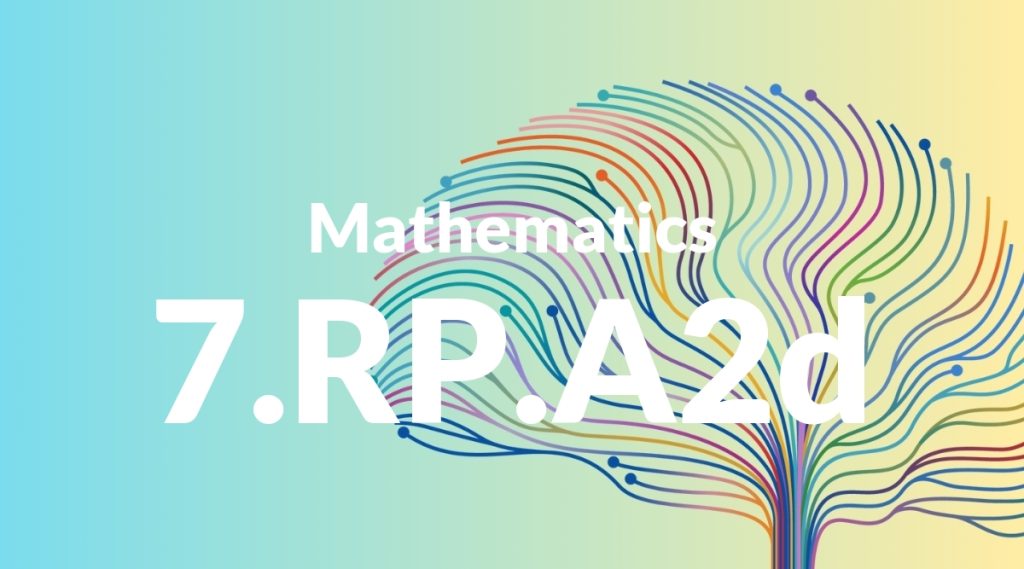Standard: 7.RP.A2d – Explain what a point (x, y) on the graph of a proportional relationship means in terms of the situation, with special attention to the points (0, 0) and (1, r) where r is the unit rate.
Grade level: Grade 7
Subject: Mathematics
Domain: Ratios & Proportional Relationships
Teacher Overview
This standard focuses on helping students understand the meaning of points on the graph of a proportional relationship, especially the significance of (0, 0) and (1, r). This is crucial for developing a deep understanding of ratios and proportional relationships, which are foundational for algebra. Students need a solid grasp of plotting points on a coordinate plane, understanding ratios, and calculating unit rates.
After mastering this standard, students will be prepared to tackle more advanced topics in algebra, including linear equations and functions, by understanding how to interpret and analyze graphs.
Common Misconception 1
Some students might think that the point (1, r) is arbitrary and not related to the unit rate. This misconception arises from a lack of understanding of how unit rates function in proportional relationships.
Intervention 1
Use graphing software or interactive activities to demonstrate how changing the unit rate affects the graph and emphasize the role of (1, r) in these changes.
Common Misconception 2
Another common misconception is confusing the points (0, 0) and (1, r) with other points on the graph. Students may not understand why these points are special.
Intervention 2
Incorporate activities that require students to identify and explain the significance of (0, 0) and (1, r) in various contexts, reinforcing their unique roles in proportional relationships.
Prerequisite Knowledge
Students should understand basic concepts of ratios and proportions, how to plot points on a graph, and the concept of unit rates.
Subsequent Knowledge
Students will be able to analyze and interpret more complex graphs and functions, including linear equations and inequalities.
Instructional Activities
- Graphing various proportional relationships and identifying key points
- Interactive simulations showing changes in unit rates
- Real-world problem solving involving proportional relationships
- Group discussions on the importance of (0, 0) and (1, r)
- Creating posters that illustrate different proportional relationships and their graphs




